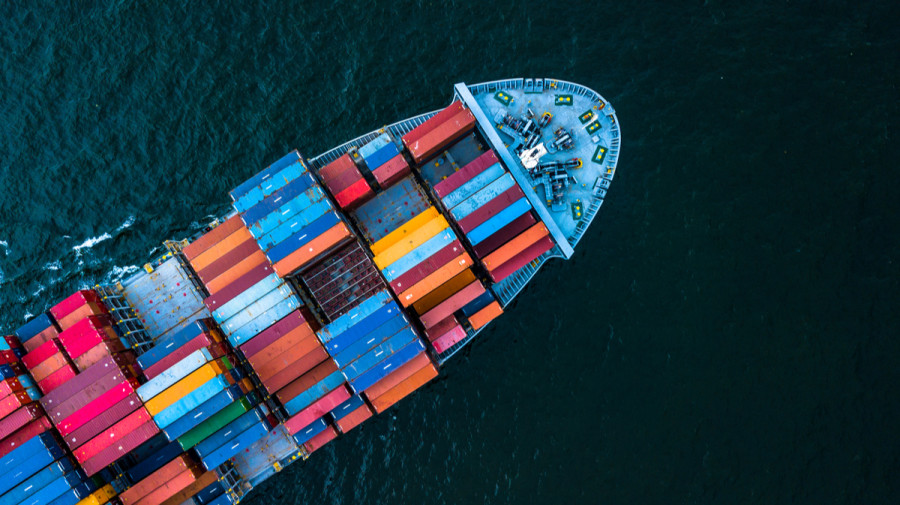Columns
Nepal needs a better strategy
India’s GST helped Nepal to shore up exports, but core competence is a concern.
Pratim Ranjan Bose
The year 2019 was extraordinary for India-Nepal trade. First, India connected Nepal by South Asia’s first petroleum product pipeline. Second, Nepali exports to India shot up by 63 percent to a 20-year high of $649 million, ignoring a fall in India’s total imports. An analysis of UN Comtrade database will reveal that India is not only the largest destination (68 percent) for Nepali exports, but it is also the only market that offers Nepal a growth opportunity. In comparison, Nepal’s exports to the United States, China and Germany either declined or remained flat.
Naturally, a spike in exports to India pushed Nepal’s total exports to $966 million in 2019, the second-best performance in two decades after $971 million in 2008. To Nepal’s joy, imports from India dropped marginally, reducing its negative trade balance by 7 percent. The biggest gain of 2019, however, was psychological. The trade performance proved that goods and services tax (GST), introduced by India in July 2017 as part of domestic tax reforms, is no hurdle to exports as many in Nepal preferred to believe back then.
Illogical fear
The fear was illogical. GST replaced an archaic source and transaction-based, inconsistent indirect tax system by a modern destination-based tax system that ensured the same tax for each product across India. It is a domestic tax applied on all goods and services sold in India. Imports are treated as inter-state transfers, and attract integrated goods and services tax (IGST) at the same rate as domestic products. Import duties other than basic customs duty are subsumed with it.
Including the benefits of an input tax credit, GST brought down the tax incidence on imported and domestic products equally. But for exports from SAARC (South Asian Association for Regional Cooperation) countries, GST brought additional benefits. Except for Pakistan, the rest of SAARC nations were already enjoying wide-ranging duty benefits—under the scheme for less developed countries, South Asian Free Trade Agreement (SAFTA) and bilateral treaties—in India.
There were many operational issues, which were steadfastly ironed out since 2014 when the Narendra Modi government came to power. GST reduced the barrier further by subsuming special import duties and countervailing duty. The results are visible. Beginning in 2001, India’s imports from SAARC increased by $3 billion, of which 40 percent ($1.1 billion) came in the last five years, and 30 percent ($910 million) is attributed to the last two years between 2017 and 2019. Keeping Pakistan out of the context, the benefits were shared by all SAARC nations.
All but Nepal witnessed a sharp growth in exports to India in 2018. Sri Lankan exports faltered in 2019, but they are still ruling 50 percent higher than the 2017 ($663 million) level. Bangladesh’s exports more than doubled from $591 million to $1.2 billion from 2017-19. Many may start comparing this with India’s exports growth to SAARC and its ballooning trade surplus with the neighbours. However, that’s a misguided comparison.
Imports are to meet domestic demand. Nepal’s imports are growing despite a higher average tariff wall (16.85 percent average, UN Comtrade) vis-à-vis India (12.66 percent). If India still meets 71 percent of Nepal’s imports, that’s because it has a competitive edge over other players. To reduce the trade gap, one has to make the domestic economy competitive enough. Are outsiders responsible for Nepal’s failure to grow enough food? The argument is similar with respect to India’s negative trade balance with China.
Low sustainability
That takes us to question if Nepal’s export performance in 2019 is sustainable. The answer is no. Export performance is a factor of competitiveness and capacity that is critical from a price realisation point of view. It is difficult for smaller countries to build a portfolio of diverse goods with critical capacity. Naturally, they focus on a few. For example, Bangladesh developed itself as a formidable player in the apparels sector (clubbed under HS codes 61 and 62), contributing 85 percent of the country’s export revenue. Sri Lanka is strong in garments, followed by tea, spices and some manufacturing.
Under normal circumstances, they find it difficult to dent into the Indian market which has bigger capacities in each of these sectors. A duty advantage under the GST regime opened a fresh opportunity to them. Between 2017 and 2019, apparel exports of Bangladesh and Sri Lanka to India grew by 60 and 80 percent respectively. For Dhaka, it has been the top export item to India, contributing one-third of the total revenue. In other words, both these countries are rewarded for their core competence. But the same is not true for Nepal.
In 2019, Nepal’s total export to India grew by approximately $251 million. This was almost entirely contributed by palm oil ($197 million) and soybean oil ($55 million) about which there was barely any reference in the last five years. One can still understand Nepal importing soybean from India and sending back refined oil, riding on duty-arbitrage and cheap labour. But palm is grown in Indonesia and Malaysia, and no amount of duty differential will justify its shipment all the way to Nepal, which is 700 km from the nearest Indian port. India’s port-based facilities can do the job at the least cost. This is clearly not sustainable. Last heard India is taking measures to stop it.
Unfortunately, history is full of such examples. In 2008, Nepal’s exports to India reached $632 million—second highest in 20 years—riding on iron and steel and plastics, which survive on the imported raw material. The next year exports were down to $416 million. The problem doesn’t lie in importing raw materials alone. Japan imports iron ore. Bangladesh doesn’t grow cotton. But they dominate the global finished goods export market, riding on core competence in low-cost, quality production.
Nepal lacks such examples either in the manufacturing, processing or agri-horticulture sector. It’s high time Kathmandu built export-oriented critical capacity, based on core competence, in select areas to address these weaknesses. There are many ways to do it. It can adopt the Bangladeshi model of labour cost arbitrage to play the volume game. A better strategy is to follow the Sri Lankan model of avoiding price competition. While Bangladesh storms the world with T-shirts, the island nation focused on brassieres. It produces less tea than India, but fetches higher prices in select markets.
***
What do you think?
Dear reader, we’d like to hear from you. We regularly publish letters to the editor on contemporary issues or direct responses to something the Post has recently published. Please send your letters to [email protected] with "Letter to the Editor" in the subject line. Please include your name, location, and a contact address so one of our editors can reach out to you.




 9.12°C Kathmandu
9.12°C Kathmandu















